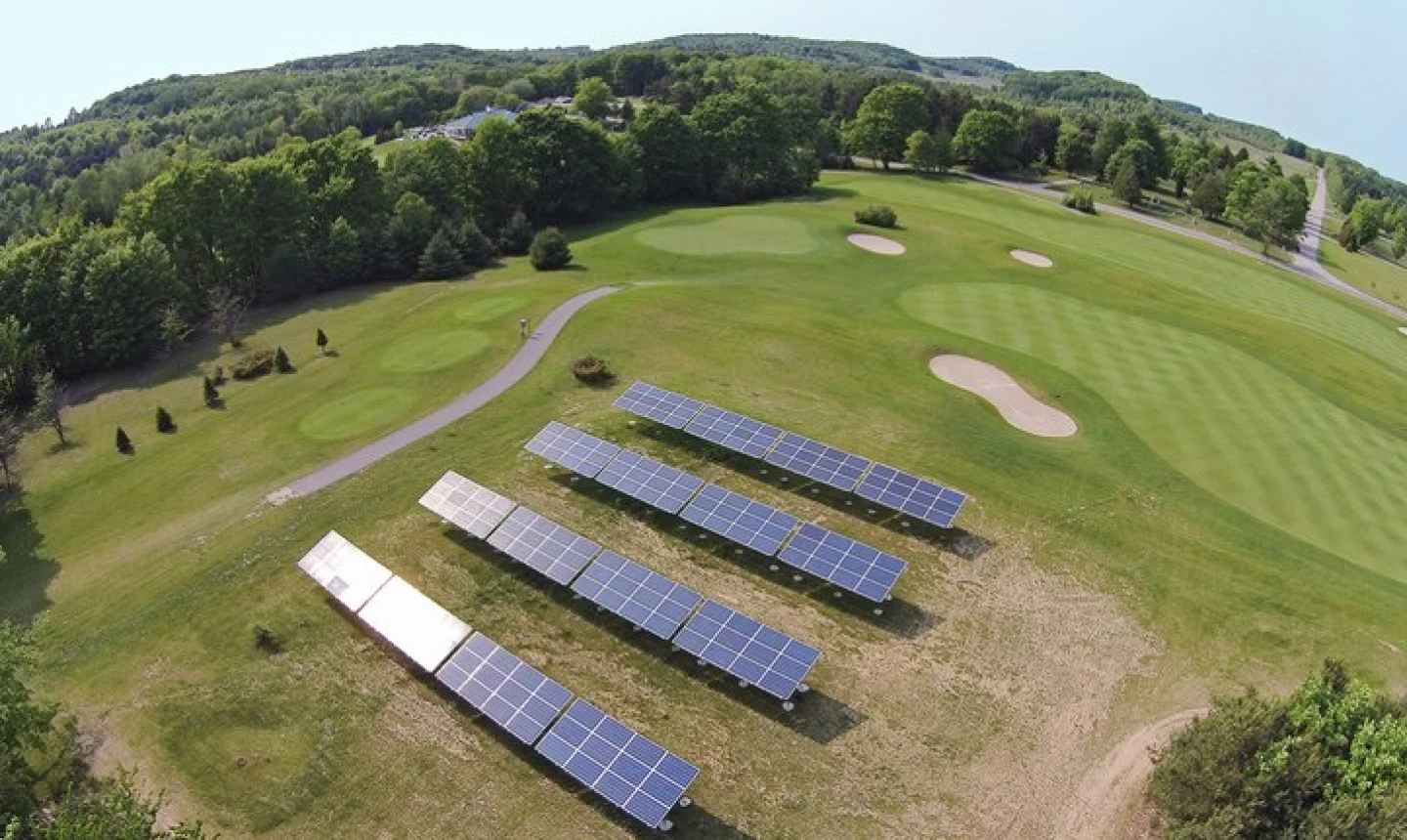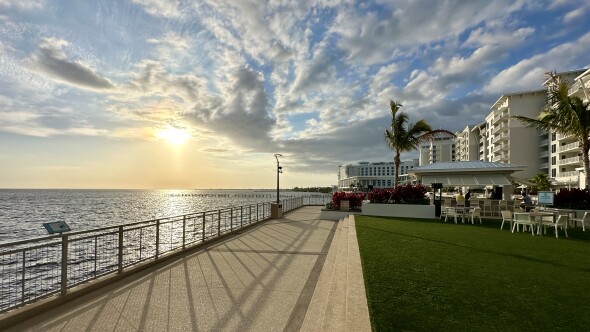While golf courses are often a target for environmentalists, most superintendents and golf course operators go to great lengths not only to protect the environment, but to give back.
Gone are the days, for the most part, where golf courses were merely water hogs, irrigating with millions of gallons of drinking water with the excess carrying toxic chemicals into the groundwater system.
These days, most golf courses employ precise irrigation and pesticide use, conserving whenever possible and doing everything they can to protect the environment.
So in honor of Earth Day, we've revealed 10 examples of how golf courses are doing their part to not only protect the environment, but contribute to it.
Golf is for the bees in Carmel Valley, Calif.
Carmel Valley Ranch has a SmartHive, which is a bee hive sitting on a scale with sensors that transmit data on the health of the hive, including weight, temperature, and weather conditions. Having a Smart Hive on the course is a unique opportunity to contribute valuable information which will help in understanding the real-world effects of pesticides on bee health, and the course offers guests interactive tours of the initiative.
Michigan golf course uses sun to grow more than grass
Winner of Golf Digest's Green Star award, Northport Creek Golf Course in Northport, Mich. is a nine holer that uses solar power from computerized panels placed on the course for the clubhouse, golf carts and irrigation pumps. When it opened in 2014, Northport Creek became the nation's first course to be totally solar powered.
Chasing butterflies in New York
Matt Ceplo, superintendent at Rockland Country Club in Sparkill, N.Y., has helped grow the dwindling population of beautiful Monarch butterflies by convincing members to keep plenty of milkweed plants on the property. The butterflies like to lay their eggs on the milkweed plant, and the Sparkhill area is on the migration path from Mexico to southern Canada.
Zero waste at Dairy Creek G.C.
Since 2012, Josh Heptig has led a zero-waste initiative as the director of golf course operations for the County of San Luis Obispo, Calif. Dairy Creek Golf Course in San Luis Obispo uses organic composting that comes from two sources -- golf course's green waste and the food-and-beverage waste. Dairy Creek's goal is to eliminate waste that leaves the golf course.
Video: Shackelford, Ginella on Earth Day golf initiatives
Turf removal means less water, pesticides
Like many courses in America, North Ranch Country Club in Westlake Village, Calif. has removed 35 acres of highly managed turf. The result is big savings on water and pesticide use for the course, which is located about an north of Los Angeles.
All organic on Martha's Vineyard
Vineyard Golf Club on Martha's Vineyard, Mass., uses no synthetic pesticides, fertilizers or herbicides. This beautifully manicured golf course shows that it's possible to maintain top conditions without the use of chemicals. The Vineyard is one of just a handful of golf courses in North America that are totally organic.
Eagle watch at Bear Trace in Hamilton Co., Tennessee
Since 2011, Bear Trace Golf Course at Harrison Bay State Park in Tennessee has been a home for bald eagles. Superintendent Paul Carter has installed an "Eagle Cam" so everyone can have a look (harrisonbayeaglecam.org). Bear Trace has twice been recognized for the Governor's Environmental Stewardship Award.
Natural heat at Westchester C.C.
Since 2010, Westchester Country Club in Rye, N.Y. has benefited from a huge geothermal project that annually saves the club more than $200,000 on heating and cooling.
Iowa course's wetland system recycles even more water
Brooks Golf Course in Okoboji, Iowa first reduced water use by 10 percent, then implemented a wetland system that collects the backwash water from a nearby water tower, to save even more. The plan is in cooperation with the Iowa Department of Natural Resources.
A reversal of water fortune on the Big Island
Kohanaiki on the Big Island of Hawaii has built a series of brackish water wells. Those wells supply a reverse-osmosis plant for water filtration, and a 12-million-gallon lake that will supply enough water to irrigate the golf course and all of the community's landscaping at a cost far less than the expense of purchasing water elsewhere.



















It is refreshing to see golf courses considering the environment when using their courses. I would recommend that you include the use of clean, quiet electric carts as an environmental necessity. Noisy, polluting, gas carts put out the equivalent pollution of a garbage truck, while clean, quiet electric carts have the impact of a Tesla.
One such course that refuses to invest in clean, quiet, electric carts is Riverwood Golf Course in Port Charlotte FL. Since opening in the 1990s, they have determined that using loud, dirty, gas carts is more important than investing in clean, quiet, electric carts. The courses cuts through neighborhoods, and runs adjacent to a protected wildlife, river preserve.
An environmentally responsible ownership would have invested in electric carts long ago. I urge those who care about the environment to insist that golf courses do the right hing and use electric carts.